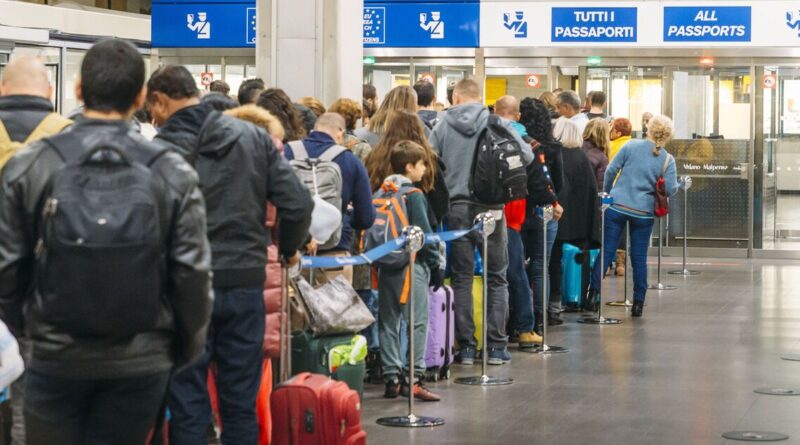Everything Brits need to know about new EU border rules | World | News
British tourists have been warned of four-hour queues across EU countries as they adopt a new passport control system. The Entry/Exit System (EES) will mean non-EU citizens have to register their biometric details, such as finger prints and a photo, as opposed to manually stamping passports. Only Cyprus and Ireland will continue to stamp passports.
While it’s gradually rolled out in Europe over the next six months, travellers have been advised to arrive early and expect longer queues at the airport. Anyone who is a non-EU national and travelling for up to 90 days within a 180-day period will have to comply with the EES. Children under 12 will not have to give their finger prints, but will need to have their faces scanned.
The data being collected is the information listed in your travel documents, the date and place of each entry and exit, a facial image and fingerprints, and whether you were refused entry.
It will be used by countries to identify who isn’t allowed to enter, those using fake identities, and to help prevent and investigate serious crimes.
Travellers will need to register their details on the first visit to the affected countries at purpose-built booths. Nothing needs to be done before arriving. EES registration is free and valid for three years before it must be renewed.
Those going to countries in the Schengen zone during these three years will still need to provide a fingerprint or photo at the border upon entry and exit.





